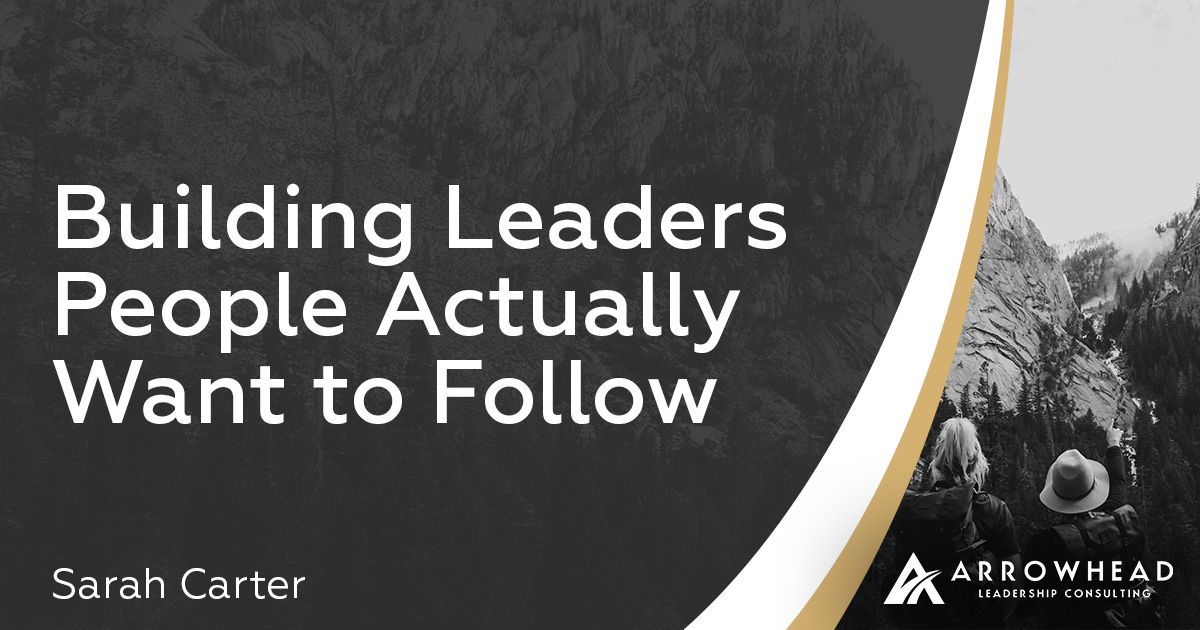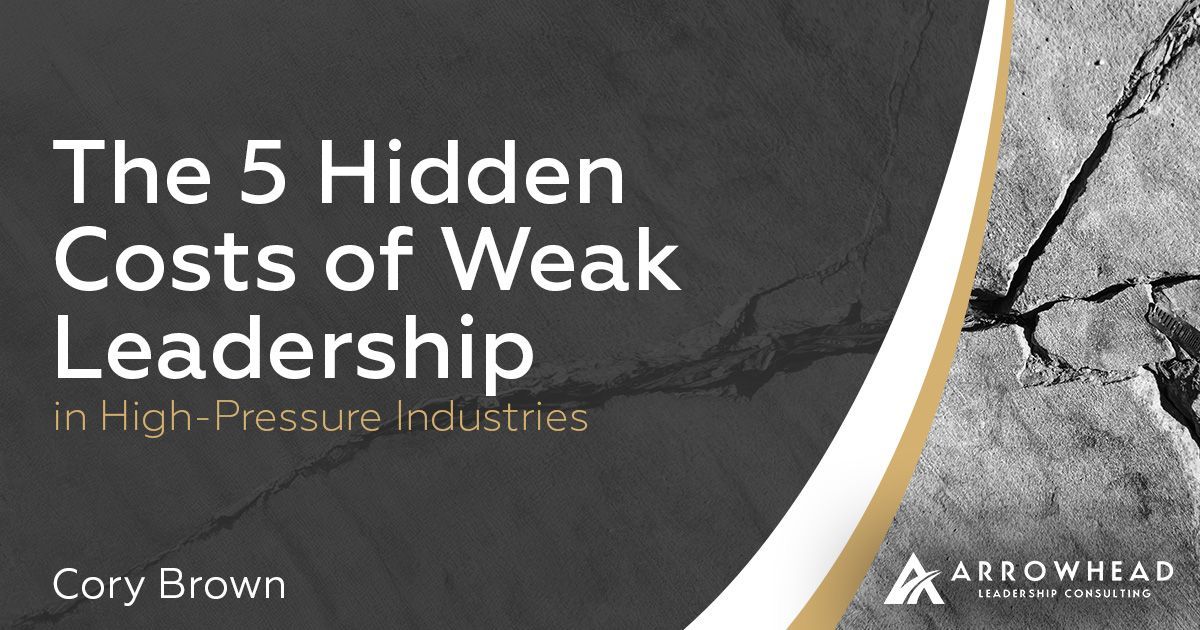The Silent Drain: How Leadership Gaps Cost You Top Talent and How to Fix It: Part 1
What’s Causing the Silent Drain?
Your culture’s crumbling. Your best people are quitting. Projects are missing the mark.
But the issue isn’t always obvious, it’s often hidden in plain sight.
This silent drain is costing companies millions... and it all comes down to one thing:
Leadership gaps.

The Silent Drain: How Leadership Gaps Cost You Top Talent and How to Fix It
In today's dynamic business landscape, organizations face a pervasive challenge that often goes unnoticed until its impact is undeniable: leadership gaps. These aren't just minor skill deficiencies; they represent a critical misalignment between your current leadership capabilities and what's truly needed for future success.1 The consequences are severe, directly impacting talent retention, productivity, and ultimately, your bottom line.1
The stark reality is that poor leadership is a primary driver of employee turnover, with some research indicating that as much as 75% of voluntary departures are directly attributable to it.5 When your best people walk out the door, they take with them invaluable knowledge, experience, and a piece of your competitive edge. But what exactly are these gaps, how do you spot them, and most importantly, what can you do to bridge them before they inflict irreversible damage? Do managers need to develop their emotional intelligence; do you need a consulting team to flesh out your issues; or do you need team building events to build cohesion?
Understanding the Leadership Gap: More Than Just Missing Skills
A leadership gap exists when there's a disconnect between the competencies your organization needs to thrive and those your leaders currently possess.2 This can stem from a lack of mastery in required skills or simply a lack of focus on necessary capabilities.6 As companies grow, the demands on leaders evolve. A flexible generalist who excelled in a startup might find themselves ill-equipped for the complexities of a scaling enterprise, creating new voids.7
The link to talent retention is undeniable. Employees who feel unsupported, undervalued, or disengaged, often direct results of ineffective leadership, are far more likely to seek opportunities elsewhere.8 A disengaged employee, for instance, is 12 times more likely to leave than one who feels supported.5 This isn't just about morale; it's about the fundamental decision an employee makes to stay or go.
Beyond retention, leadership gaps translate into tangible business costs:
- Productivity Decline: Organizations with weak leadership can experience up to 30% lower productivity through missed opportunities, slow execution and a lack of innovation.5
- Culture Breakdown: Poor leadership development can lead to engagement levels dropping by up to 50%, fostering toxic environments characterized by distrust and blame.8
- Negative Reputation: Ineffective leadership damages your employer brand, making it harder to attract new talent and retain existing high performers.8
- Customer Dissatisfaction: A focus on short-term profits over customer needs, often a symptom of leadership gaps, can lead to negative customer experiences and lost business.9
Spotting the Red Flags: Early Warning Signs of Talent Attrition
Before top talent walks out, they often send subtle signals. Recognizing these "red flags" is crucial for proactive intervention:
- Decreased Engagement
- Poor Communication
- Frequent Absences & Performance Decline
- Changes in Attitude
- Increased External Interest
- Lack of Development Opportunities
Strategic Identification: Pinpointing the Gaps
Proactive identification is the cornerstone of effective talent retention. This isn't about guesswork; it's about systematic assessments, whether identifying what capabilities leaders need, a formal evaluation process or define what leaders need to grow within the organization. 6, 7, 13
Tools for deeper insight might include psychometric tests, situational judgement test through training or outside consultation, 360-degree feedback mechanisms, or behavioral based interviews. 14, 15 It's crucial to combine these tools for a holistic view. A 360-degree assessment might show a communication issue, but it won't tell you
why, is it a lack of knowledge, understanding of importance, or a systemic barrier? 15 Combining tools like psychometric tests with situational judgment tests provides a more nuanced understanding of the root cause.16
The Path Forward: Bridging Gaps and Retaining Talent
Addressing leadership gaps requires a multi-faceted, integrated approach:
- Invest in Targeted Leadership Development:
- Continuous Learning: Foster a culture of ongoing skill enhancement, emphasizing experiential learning (70% of learning comes from on-the-job experiences).17
- Coaching & Mentorship: Remote coaching is particularly effective in dynamic environments.
- Customized Training: Tailor programs to specific identified gaps, focusing on practical application and reinforcement.
- Role Swapping: Promote agility by allowing leaders to gain diverse experiences across functions, enhancing engagement and retention.
- Build a Robust Leadership Pipeline & Strategic Succession Planning:
- Proactive Talent Identification: Identify high-potential talent early, looking 5-10 years ahead based on evolving business strategy.
- True Succession Planning: Go beyond mere "replacement planning" to develop a talent pipeline across the entire organization, preparing multiple generations of leaders for critical roles.
- Internal Development: Investing in developing leaders from within is often more effective and cost-efficient than external hiring, as external hires are 61% more likely to fail within 18 months.
- Groom Emerging Talent: Equip younger generations with the capabilities to ascend quickly, leveraging their new skills and perspectives.
- Foster a Positive Organizational Culture:
- Transparent Communication: Clear and consistent communication builds trust and ensures employees understand their roles and company goals.
- Accountability: Establish clear performance metrics and regular reviews. A lack of accountability can lead to high performers leaving.
- Recognition & Rewards: Acknowledge achievements to strengthen morale and improve retention.
- Work-Life Balance: Support flexible schedules and wellness resources to prevent burnout and enhance the employee experience.
- Employee Commitment: Foster a sense of ownership and purpose, ensuring managers feel heard and valued.
Measuring Success: The ROI of Leadership
To ensure your efforts are paying off, continuously measure the impact:
- Employee Satisfaction & Turnover Rates: Track through surveys and monitor departures, especially among high performers but understand that low turnover correlates with high satisfaction.
- Team Productivity & Project Completion: Measure efficiency and goal attainment - declines can signal leadership issues.
- Customer Feedback Scores (CSAT, NPS): Reflect how leadership decisions impact customer experience.
- Leadership 360-Degree Feedback: Provides comprehensive insights into a leader's impact from multiple perspectives.
- Individual Development Tracking: Monitor improvements in skills and career progression (promotions, role expansions).
Organizations investing in leadership development report a 25% increase in organizational outcomes and 25% better overall business outcomes.24 A mini case study on structured, experience-driven training reported a 42% improvement in leadership confidence, 28% increase in project execution speed, and a 34% reduction in voluntary turnover.5 This demonstrates that investing in leadership is a direct investment in retention, productivity, and a stronger culture.5
Conclusion: A Strategic Imperative
The current landscape, marked by a lack of leadership depth and declining trust in managers, presents a "leadership crisis".20 However, this is also a profound strategic opportunity. Organizations that proactively address leadership gaps are not just mitigating risk; they are demonstrably outperforming their competitors.20 Microsoft's cultural transformation under Satya Nadella, fueled by leadership development, exemplifies how excelling in this area can drive substantial market cap growth and elevate employee engagement.20
To prevent the costly loss of top talent and secure future success, prioritize understanding and addressing leadership gaps as a core strategic function. This demands a commitment to data-driven insights, integrated talent management, and a proactive mindset that anticipates future leadership needs. By investing in your leaders, you are investing in your most valuable asset, YOUR PEOPLE, thereby securing a sustainable competitive advantage in an ever-evolving global landscape. Leadership development is not a destination, but an ongoing journey of continuous assessment, adaptation, and evaluation. That’s why we here at Arrowhead Leadership want to serve as your pathfinder. As experienced leaders we’ve dealt with organizational dilemma’s, failing retention, lackadaisical management, and poor self accountability. Our programs are designed to inspire, enlighten, and mentor leaders at all levels to coach, teach, and develop their direct reports. It is our mission to build competent and emotionally intelligent leaders who drive their organizations to the next level.
Arrowhead Leadership Blog











